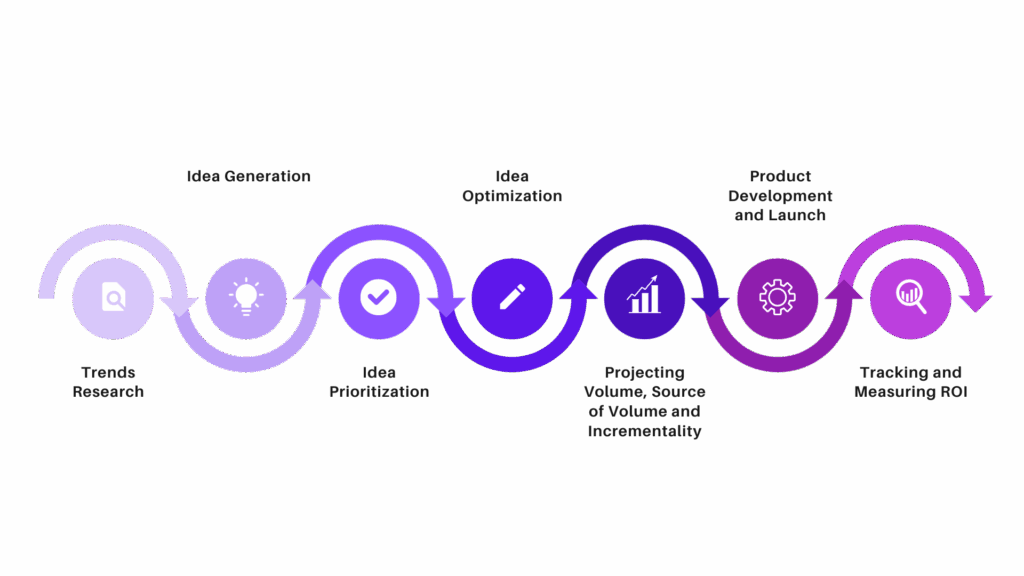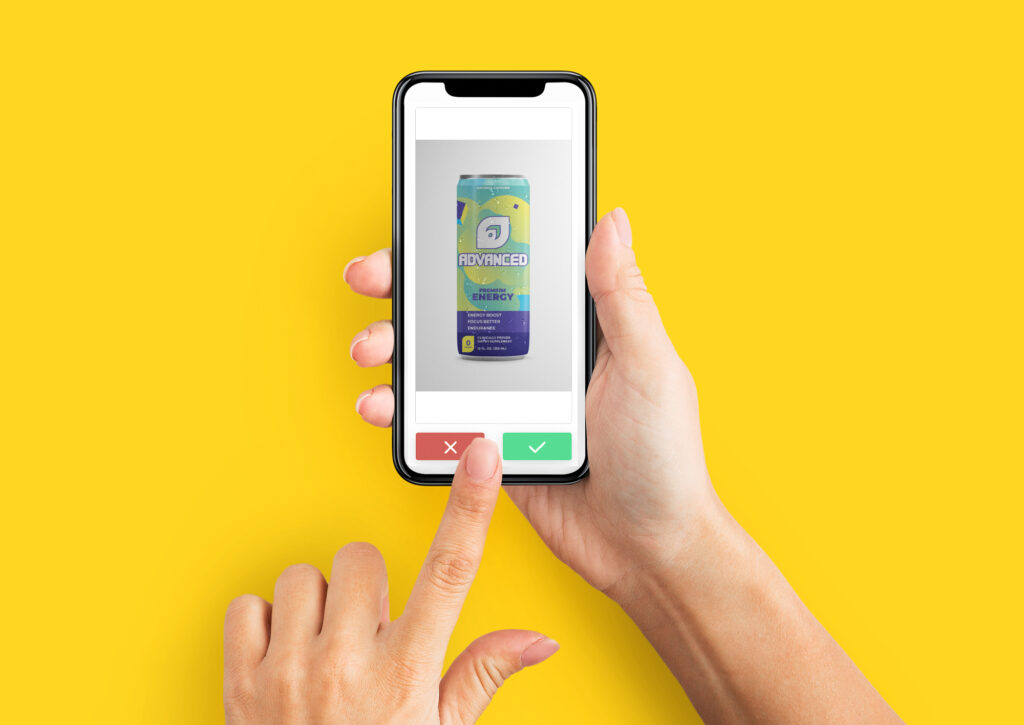What Is the CPG Innovation Process?
The CPG innovation process is the structured journey consumer packaged goods (CPG) companies follow to generate, test, and launch new products. It typically includes six stages: idea generation, idea screening, optimization, forecasting, development, and measurement. When done well, this process helps CPG brands reduce risk, stay consumer-centric, and bring products to market that resonate.
Why Is the CPG Innovation Process So Difficult?
The CPG sector is one of the most competitive industries in the world. Brands must innovate fast, often with limited research budgets and constant pressure to launch. Here are three reasons why the innovation process is so challenging in CPG:
1) Innovation isn’t easy to do
Part of the challenge of running innovation projects in CPG lies in just how abstract innovation is by nature. Since you’re developing something that’s brand new, you usually can’t predict how your new product, offer, package, or marketing asset will perform in reality. For all you know, the innovation may not even succeed after launch – a risk that every CPG brand has gotta take if they want to innovate. But there are ways of mitigating that risk.
2) Innovation isn’t a dedicated function in a lot of CPG businesses
Most of the time, CPG organizations don’t have special innovation teams or experts. After all, the CPG sector spends about 3% of global R&D spending, as compared to 23% in the electronics sector. It’s less of a focus for CPG than it is for other industries; put a different way, they don’t value it quite as much. So, some CPG brands might not even have the in-house expertise needed to kickstart the innovation process.
3) Innovation isn’t by nature consumer-centric
Companies love to use the word “consumer-centric” when they build strategies, loiter around the water cooler, or present to other stakeholders. But not every business makes consumer-driven innovation processes. Instead, brands often rely on assumptions and opinions without verifying that those things align with real consumer motivation or needs. This can cause problems before you’ve even gotten to the concept testing stage of innovation.
Key takeaway: The CPG innovation process is difficult because it’s risky, underfunded, and often not grounded in true consumer insight.
The 7-Step CPG Innovation Process
We’ve got our own approach to the agile innovation journey. This approach lets us ideate, refine, re-test, and move into product development quickly and easily.
Here’s what it looks like:

1) Trends Research
Before generating ideas, it’s critical to ground your thinking in market signals, cultural shifts, and competitive context. Trends research helps teams identify what’s changing in consumer behavior, what new needs are emerging, and how competitors are adapting.
2) Idea generation
This stage is all about quantity. Teams brainstorm new product, packaging, or campaign ideas that address consumer pain points or jobs to be done. At this point, creativity matters more than feasibility.
3) Idea Prioritization
Put them all ideas in an idea screening survey and send it to your potential customers. Ask your respondents to tell you which of the ideas they like best. After the survey is done, use that data to finalize which ideas you’re going to bring to the next stage.
4) Idea Optimization
Not all innovations are perfect from the start. That’s why you need to analyze how you can improve aspects of your innovation idea so that it solves your customer’s pain points and adds value to your CPG product portfolio. Brands can assess the results against business metrics that matter to them and discover which ideas are worthy of taking into development.
5) Projecting volume, source of volume and incrementality
Competition in the CPG industry is fierce. Launching a new product is way easier when you can pre-emptively calculate where your innovation will source volume from, how it will steal it from your rivals and if there are any of your own products that you’re stealing volume from (i.e., cannibalizing).
6) Product development and launch
You start prepping yourself for the final product development process by determining who your consumers are and how you will launch the innovation. And then it’s “go time” for the product launch!
7) Tracking and Measuring ROI
Now that the launch is behind you, you can start measuring how your innovation did and what returns it brought back. This is the time to compare your predictions to real performance data.
This 6-step process helped many of our CPG clients launch great product innovation projects.
Tips for Streamlining the CPG Innovation Process
1) Harvest internal and external insights
Before kicking off research, leverage resources you already have. These might include:
- Internal resources: stakeholder & expert interviews, agency partners, front-line staff, sales team, customer feedback, social media listening, internal CPG reports, etc.
- Foundational insights (if you have run any research before): usage & attitude, barriers/motivators, need states, segmentation, etc.
- External resources: literature on macro trends, consumer trends, observation (e.g. retail safari), and academic research.
2) Engage your team at every step
Maximize the success of your innovation project by leveraging your team’s strengths along the way. Make sure you seek out diverse views from different departments, from top executives to sales & marketing to engineers and product developers.
Try to create a collaborative environment where everyone gets involved and has their voice heard. Making the working and brainstorming process playful will help create a space that’s open and free of judgments and constraints.
3) Leverage innovation testing tools
Look around and find tools that are best suited to test CPG innovation ideas and align with your business goals. For example, Dig Insights’ innovation testing platform Upsiide is a great tool to screen innovation ideas thanks to its intuitive and mobile-first interface.

FAQs About the CPG Innovation Process
What is the CPG innovation process?
It’s the structured journey CPG companies use to create, test, and launch new products. The process usually includes trends research, idea generation, screening, optimization, forecasting, development, and measurement.
Why is innovation difficult in the CPG industry?
The CPG sector faces high competition, limited R&D budgets, and pressure to launch quickly. Innovation is also risky and often not grounded in consumer insights.
What tools help with CPG innovation research?
Platforms like Upsiide help brands screen and optimize ideas quickly. Other tools include concept testing surveys, usage & attitude studies, and volume forecasting models.
To sum up
Innovating in CPG doesn’t have to be hard anymore, especially when you have only 6 steps to follow.
Want to start building an innovation project for your CPG brand but not sure where to start? Learn about innovation pipelines and how to build them so you can establish your innovation process for the long term.